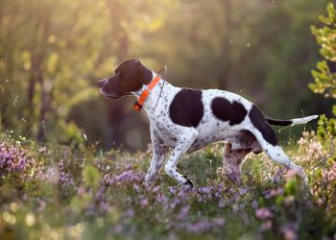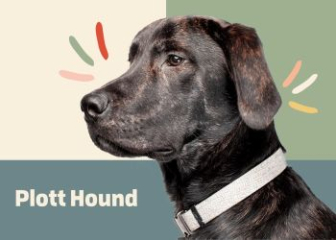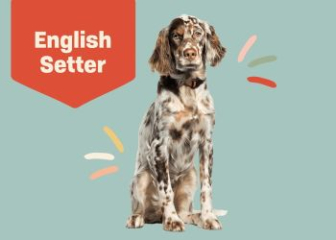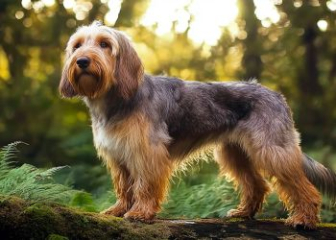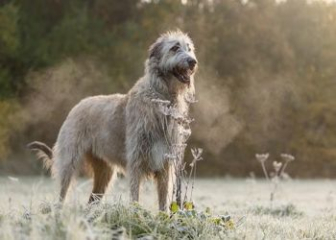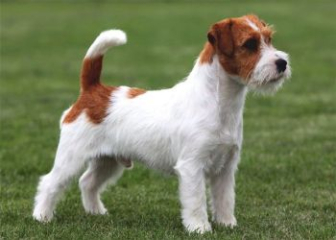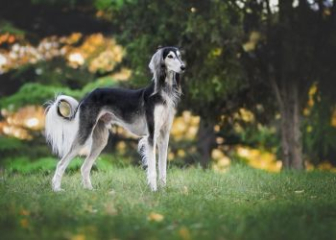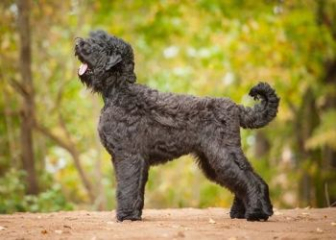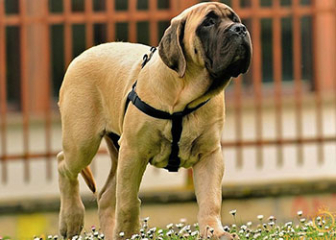Borzoi (Russian Wolfhound) – A Noble and Elegant Hunting Dog
The Borzoi, also known as the Russian Wolfhound, is a graceful and noble hunting breed with a calm and elegant demeanor. It is a rare and highly valuable dog with a rich history.
Originally bred for hunting wolves alongside Russian aristocrats, the Borzoi is tall, slender, and sophisticated. While it was once used primarily for hunting, today it is cherished as an exclusive and luxurious companion dog.
To learn more about this dog, please read the content shared by dog breed right below!

The Borzoi, also known as the Russian Wolfhound, is a majestic and elegant breed originally bred for hunting wolves in Russia.
The Borzoi, also known as the Russian Wolfhound, first appeared in Russia between the 15th and 17th centuries. It was developed by crossbreeding native Russian hunting dogs with Arabian Greyhounds and Asian sighthounds to create a tall, fast-running breed with a thick coat capable of withstanding Russia’s harsh winters. The Borzoi has a relatively short lifespan, typically ranging from 7 to 10 years.
Development of the Russian Wolfhound Breed
- 18th–19th Century: The breed became a symbol of Russian aristocracy, and only royalty and the upper class were permitted to own them.
- 19th Century: Borzois were exported to Europe and the U.S., where they continued to be favored as pets of Western royalty.
- Post-1917 Russian Revolution: The breed nearly went extinct as many were slaughtered. Fortunately, some had already been exported to the West, allowing for their preservation. They were later recognized by major kennel organizations like the AKC, UKC, and FCI.
- Present Day: The Borzoi is now a rare breed, primarily kept as a luxury pet or for participation in dog beauty competitions.
Types of Borzoi (Russian Wolfhound)
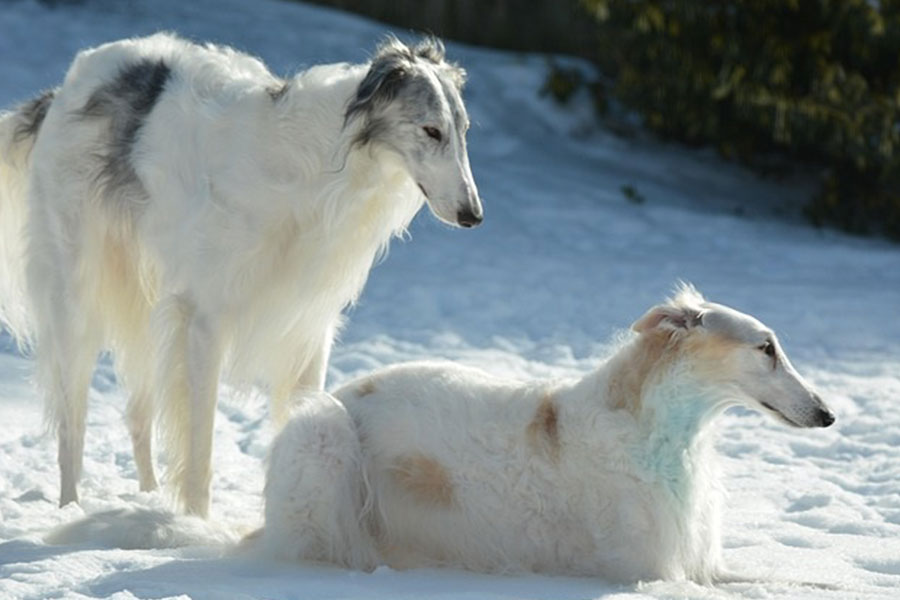
Two Russian Wolfhounds on the snow.
Currently, based on their origins, Russian Wolfhounds (Borzoi) are classified into three main types:
Russian Borzoi
This is the purebred line originating from Russia, with a history spanning hundreds of years. Some of their key characteristics include:
- Thick fur to adapt to Russia’s harsh cold climate.
- Recognized by the FCI as the breed standard.
European Borzoi
This type was developed and bred after Russian Borzois were introduced to England, France, and Germany. Their distinguishing features include:
- A slimmer body and less dense fur compared to the Russian Borzoi.
- Primarily kept as pets or for participating in dog beauty competitions.
American Borzoi
This type emerged after Russian Borzois were imported to the U.S. in the 19th century. Their main characteristics include:
- Longer legs and higher speed compared to the Russian Borzoi.
- Recognized by the AKC.
Note: Although there are slight differences among these three Borzoi types, they all belong to the same breed standard, with no significant genetic variations.
Appearance of the Borzoi – Noble & Elegant
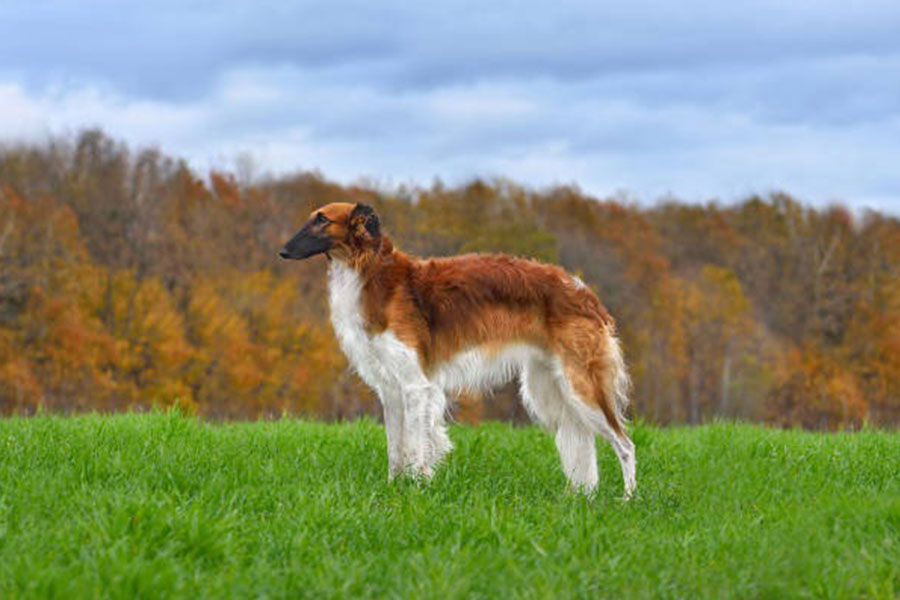
The Borzoi has a tall, elegant, and noble appearance.
The Borzoi is a tall, slender breed with a long, silky coat, giving it a noble and elegant appearance. Let's take a closer look at the physical characteristics of a purebred Borzoi.
- Height: Males range from 75–85 cm, females from 68–78 cm.
- Weight: Males weigh between 34–48 kg, females between 27–42 kg.
- Body structure: Sleek and slender but muscular and strong.
- Head: Long and narrow, with a slim yet powerful jaw.
- Muzzle: Pointed with a black nose, adding to its regal appearance.
- Eyes: Large, almond-shaped, slightly slanted, with dark brown or amber tones, giving a gentle expression.
- Ears: Small, thin, and slightly folded back.
- Neck: Long with a slight arch.
- Back: Slightly arched towards the rear.
- Legs: Long and slender but powerful, reaching speeds of up to 60 km/h; small feet with thick pads and sharp claws.
- Tail: Long with a slight curve.
- Coat: Long, silky, slightly wavy or lightly curled, denser around the neck, tail, and hind legs, and water-resistant.
- Common coat colors: White-cream, white-black, white-gold, white-silver gray.
- Rare coat colors: Pure white, white-brindle (tiger-stripe pattern).
Borzoi (Russian Wolfhound) Temperament
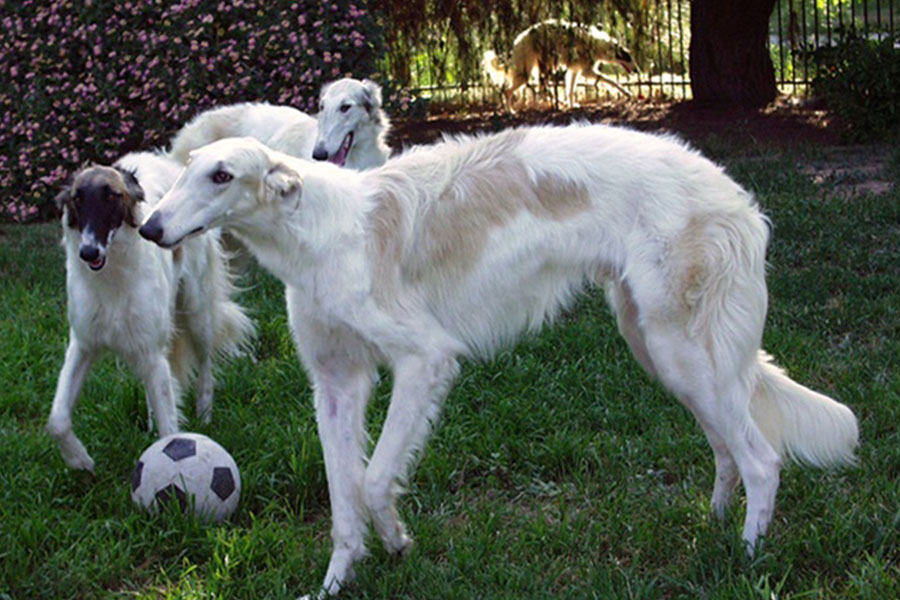
Borzoi dogs are playing with a ball in the yard.
Borzoi, despite being a hunting dog, is calm, gentle, and elegant. Let’s explore more about the temperament of this unique breed.
Calm & Gentle
Unlike many other hunting dogs, Borzoi is not noisy. They rarely bark and are not overly energetic. Their movements are graceful and composed, making them an ideal choice for those who appreciate noble and aristocratic breeds.
Strong Hunting Instinct
As a wolfhound, Borzoi has a natural instinct to chase small, fast-moving creatures, such as rabbits, cats, or even cyclists if not properly trained. For safety reasons, you should avoid letting them roam freely in public spaces.
Loyal Yet Independent
Borzoi is highly devoted to its owner but not in a clingy way. Instead, they prefer independence, often choosing to observe and think on their own rather than constantly seeking attention.
Intelligent But Stubborn
These dogs are highly intelligent and quick learners. However, they do not enjoy repetitive or robotic training like Border Collies. They prefer to make their own decisions rather than simply obeying commands. A structured training plan is essential to keep them disciplined while respecting their independent nature.
Friendly But Reserved With Strangers
Borzoi is affectionate and forms strong bonds with their owner. They get along well with family members but tend to be cautious around strangers. They require time to warm up to new people.
How to Care for a Borzoi
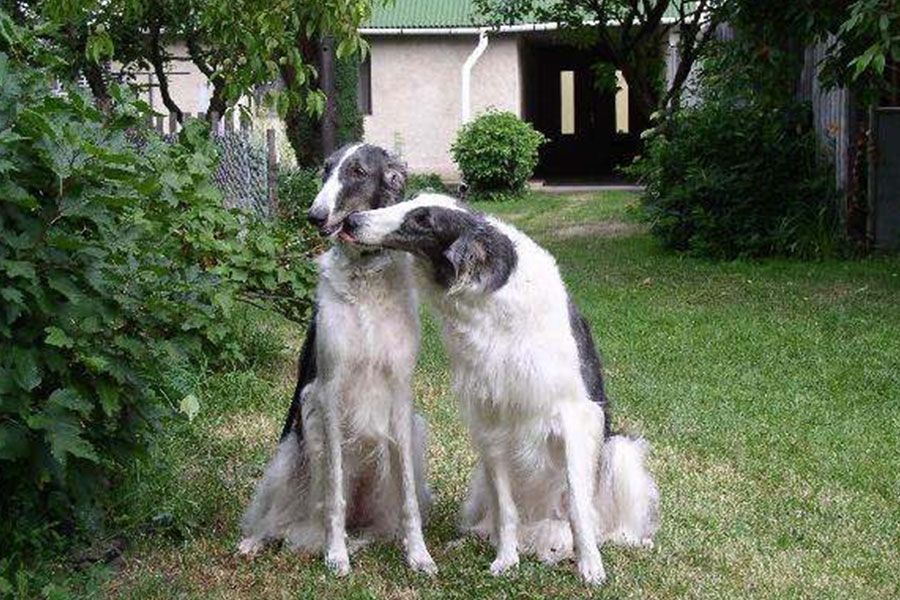
Borzoi needs a special diet for optimal growth.
Compared to other large, noble dog breeds, the Borzoi is relatively easy to care for. Check out the guide we've shared below for more details.
A Scientific Diet for Borzoi
Borzoi dogs are usually quite picky eaters, so you need a diet that is both scientifically balanced and appealing.
Recommended Foods for Borzoi:
- Protein: Should make up 40-50% of their diet, found in beef, chicken, lamb, eggs, etc.
- Healthy Fats: Should account for 10-15%, found in egg yolks, butter, olive oil, etc.
- Vitamins & Fiber: Should make up 15-20%, found in vegetables and fruits such as carrots, pumpkin, apples, leafy greens, etc.
- Healthy Carbohydrates: Should comprise 10-15%, found in whole grains, brown rice, etc.
- Calcium & Minerals: Should be supplemented regularly, found in soft bones, plain yogurt, cheese.
- Clean Water: Should always be available.
Foods to Avoid for Borzoi:
- Foods high in starch, sugar, and unhealthy fats.
- Foods with excessive seasoning, spicy, sour, salty, or sweet dishes.
Feeding Guidelines for Borzoi:
- For adult Borzoi: 2 meals per day, with around 500-600 grams of meat, along with balanced nutrition.
- For young Borzoi: 3-4 meals per day, with 350-400 grams of meat per meal
Grooming and Hygiene for Borzoi
To help Borzoi maintain a beautiful, elegant appearance and prevent skin diseases, follow these care tips:
- Brush their coat 3-4 times a week using a specialized comb.
- Bathe them once every 1 - 1.5 months.
- Clean their fur after outdoor activities.
- Clean their ears at least once a week.
- Check and wipe their eyes regularly to remove eye discharge.
- Brush their teeth at least twice a week.
- Trim their nails when they get too long to avoid movement difficulties.
Exercise & Training for Borzoi
Borzoi are highly energetic, so they require daily exercise and early training to ensure good behavior.
- Exercise for 45-60 minutes per day.
- Activities can include long walks, free running, running alongside a bike, or playing fetch to build endurance.
- Early training and socialization are essential for better obedience.
- Use positive reinforcement training (rewarding good behavior) instead of negative methods.
Health Care for Borzoi
Russian Wolfhounds should receive vaccinations, regular health check-ups, and daily monitoring to maintain their well-being. Important health tips include:
- Ensure all essential vaccinations such as 5-in-1, 7-in-1, and rabies vaccines are administered.
- Regular deworming.
- Routine health check-ups as advised by a veterinarian.
Common Diseases in Borzoi and Prevention Methods
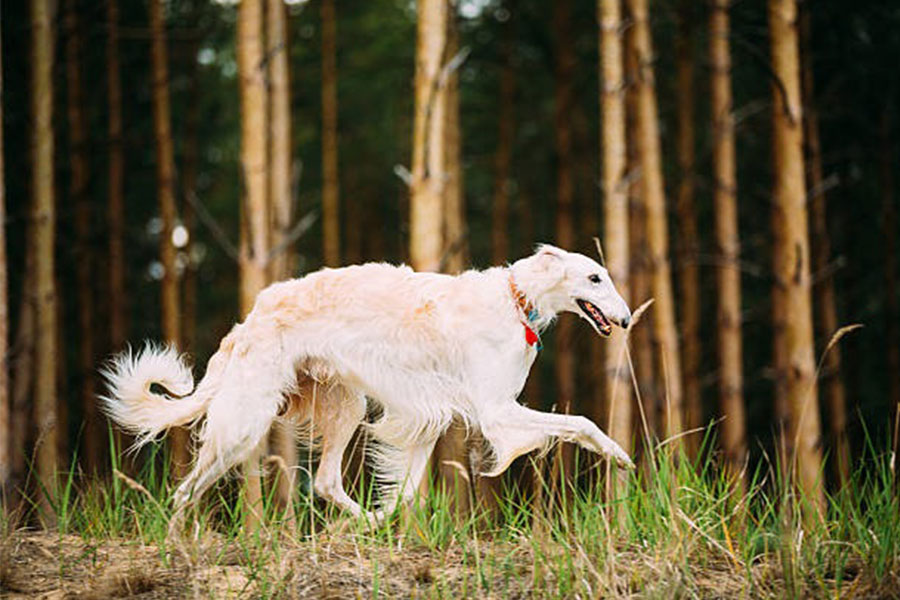
A Borzoi dog is running in the forest.
Right below are the common diseases that frequently affect the Borzoi breed. Let's explore them to learn effective prevention methods.
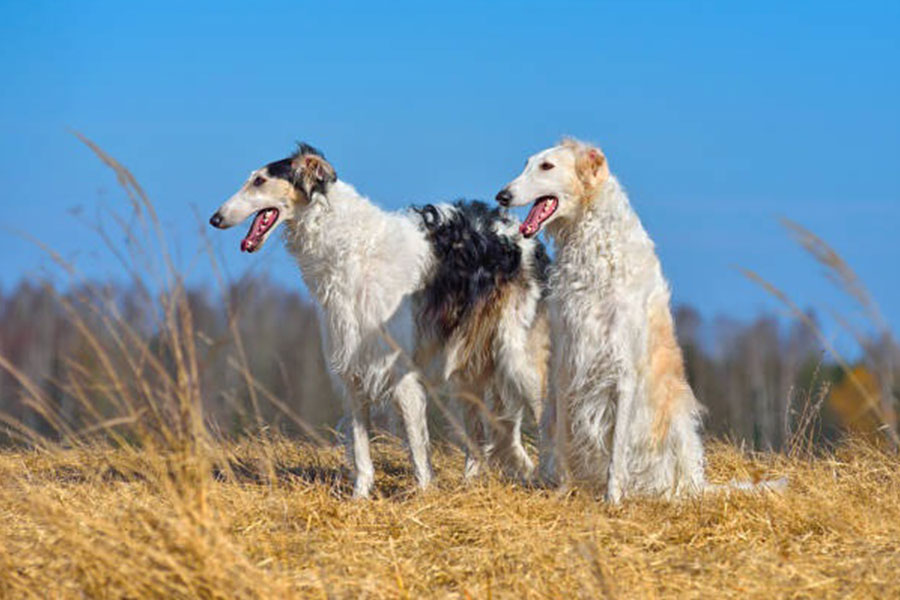
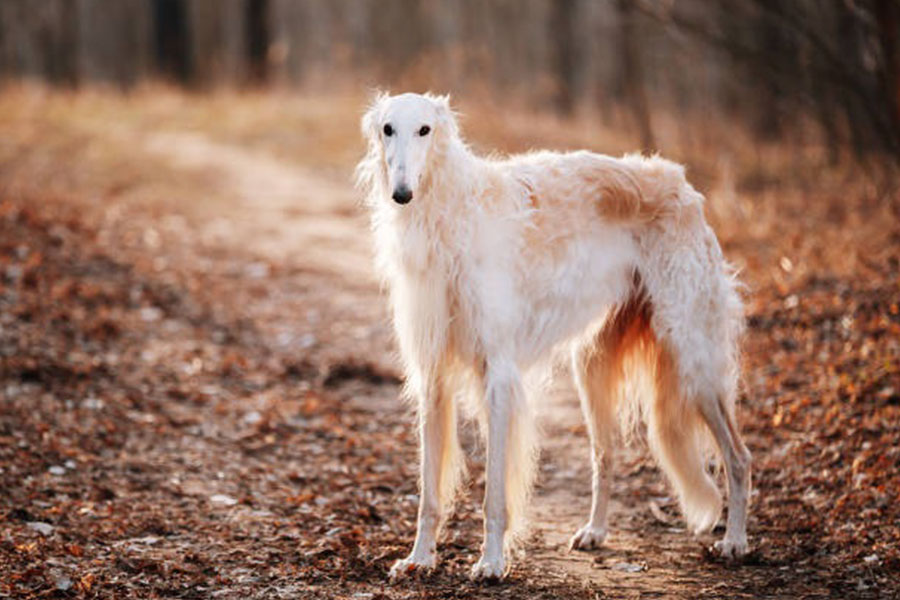
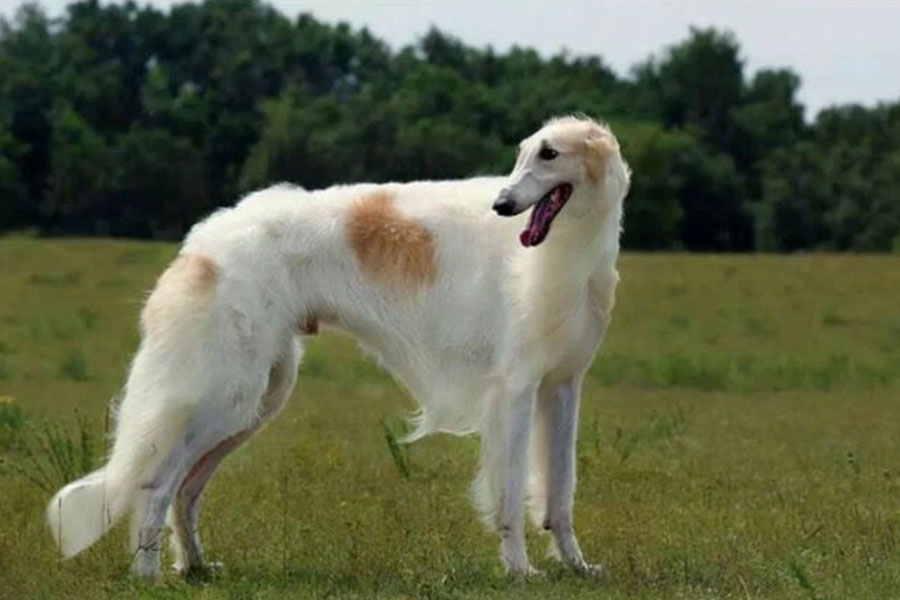
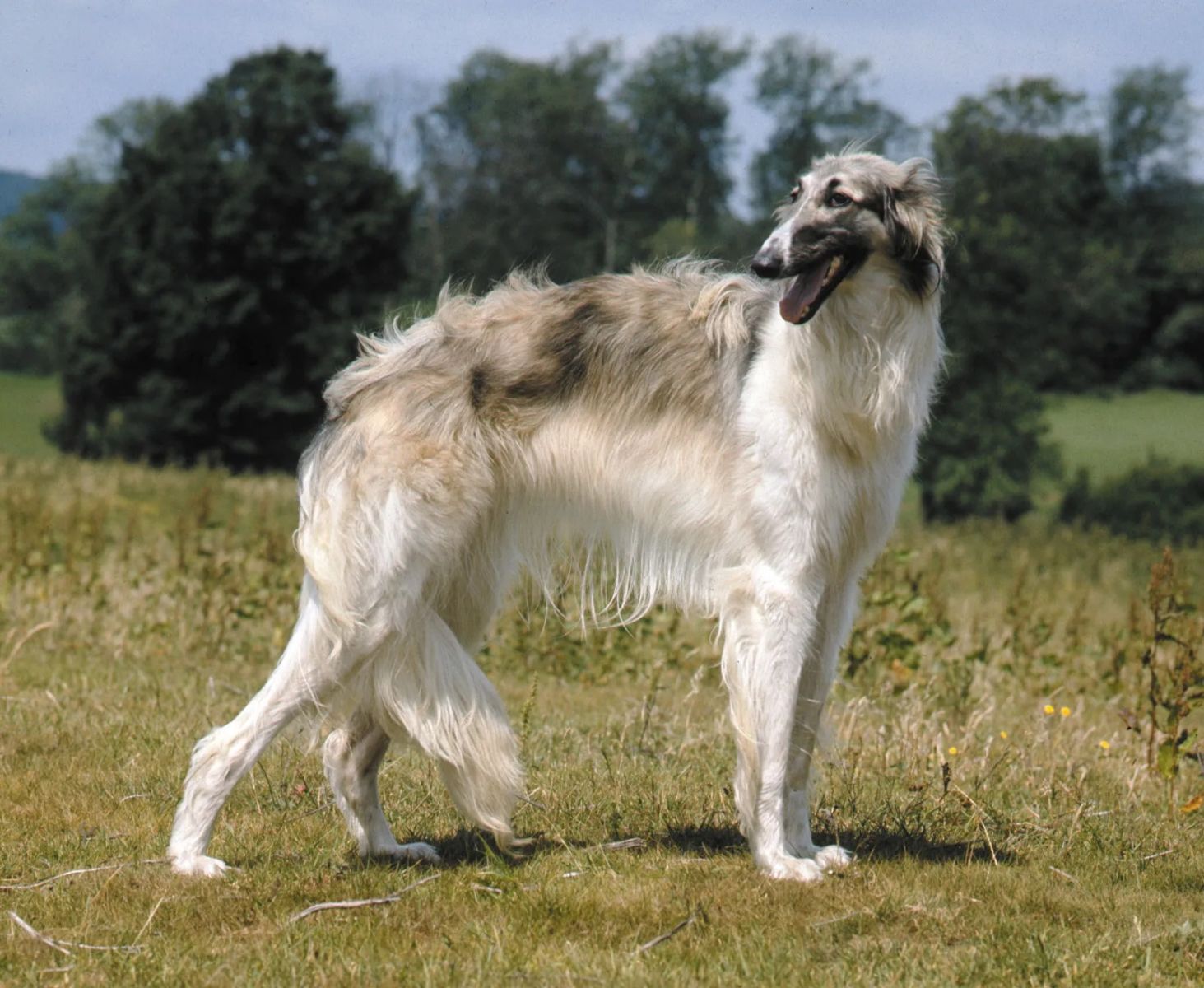
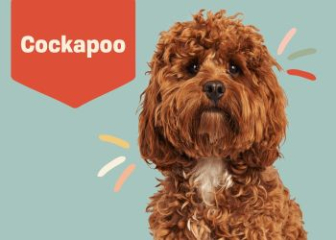
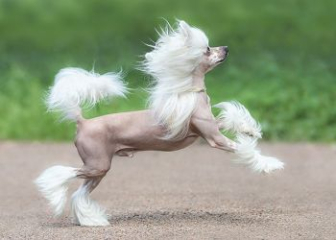
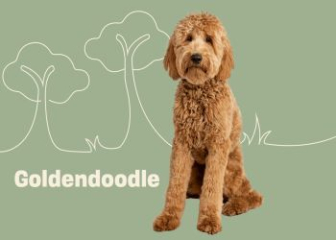
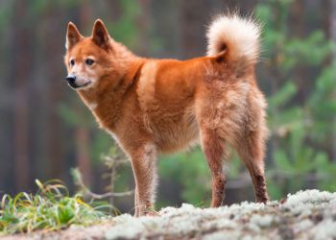
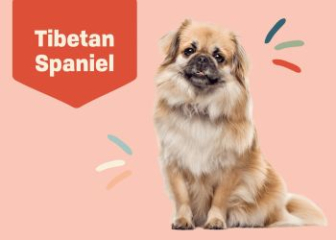
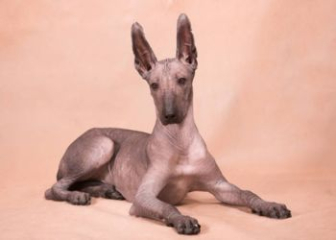
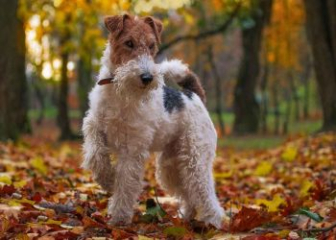

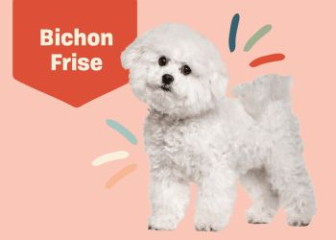
_350x250.jpg)

